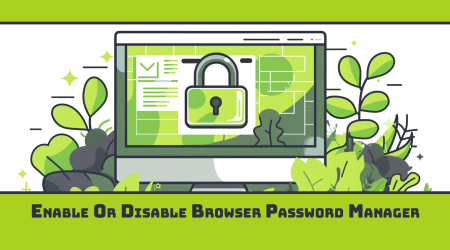Your customers want a dedicated resource to help with their technical troubles. Who wouldn’t? I can certainly appreciate wanting immediate support when I’m struggling. But as an MSPs, you need to be an expert at resource management. And two of the most expensive resources for MSPs are telephone and/or in-person support.
Before I dive into this list, I want to say, if you like to deliver phone support but are finding it difficult to meet the demand, there are two immediate things you can do to make it easier. Either A.) Raise your prices and hire people to meet demand. And/or B.) Refine your processes and improve your proactive support to reduce the number of incoming tickets.
Email support is not the be-all end-all of managed services and while most MSPs like customers to communicate by email you do not have to conform to the norm.
However, you can train your customers to use more asynchronous forms of communication if you wish. This will ease the burden on your team and also make it much easier for you to track response rates. Email support is also easier to hire for because technicians often are better at communicating by email than they are on the phone or in person. (Look, we’re geeks, ok? Don’t expect us to always be fun at parties.)
Here are 5 ideas you can try to work on training your customers to be more email focused.
Be Consistent. Be Direct – Let them know when they misdirect their communications how they should be contacting you.
When a customer calls in. Just let them know. Don’t be rude, but be direct. “Thanks for calling in about this. Usually we ask that these tickets be submitted via email. This helps us get to them faster because we can line them up and knock them out.”
Focus on the transformation this brings to your client – not to yourself. Handling tickets by email can be annoying for them, but they will learn to work with it if their problems are resolved faster. When things are managed by email you have the ability to work multiple tickets at once. So you can handle more issues faster. This means an overall better response time for your customers.
Also, they will likely get better service, overall. You will have a written record that allows your team to research issues and remember that weird quirk they fixed last time this issue came up.
So just be consistent in reminding people who call in that you cannot fix them live on the phone and that you will be creating a ticket on their behalf. This will help them to learn the best way to interact with your company and eventually get them communicating in the way you prefer best.
Setup a phone tree and forward non-critical calls to a box that transcribes and emails.
If you are running low on resources to man the phone system (we’ve all been there!). Invest in a phone tree. You probably already have a phone system you can use to do this. When your client calls in and clicks “2” for support. Have it send to a message box that opens a ticket in your system. Let them know that the messages are screened as they come in and publish your SLA on when you will get back to them for when they call in.
Transcriptions aren’t expensive these days and it will help you respond to customers faster. Bonus points if you respond almost immediately to new tickets created from the phone transcription. A simple “Looking into this” will let them know that you have heard their frustrations and are on the case! You can give a more detailed response later.
Hire a Dispatch.
Hospital Emergency Rooms put you through a front desk and a triage before you ever get a chance to see a Doctor. Unless you’re currently dying from a heart attack or stroke there is a good chance you’ll have to work through a few layers of bureaucracy in order to get the service that you need.
Larger MSPs have a similar process. If you’re struggling with a lot of calls, it may be time to hire someone to man the phones. This can be a full time employee or an answering center.
While there can be many pitfalls to this approach, a good dispatch is worth their weight in gold because they will know how to filter the critical requests from the simple ones. They don’t even have to be super technical. They just have to have a friendly attitude and be able to make judgements on where to send calls. Either writing a ticket or getting a technician involved.
Network Depot hired a dispatch a few years ago and never looked back. It has really helped them to deliver a “white glove” experience to customers without having to always point them back to email.
If the dispatch sees that a support request isn’t super time critical, then they’ll create a ticket for the customer. This saves time and lets the customer know that the request has been received.
Unpublish your support phone number from your site and show other means of contact – basically a phone tree on your support page.
Many companies have done this, both large and small. While it used to be important to have your phone number front and center. In today’s millennial run world, unpublishing your phone number or making it more difficult to find is not the business ending decision that it once was.
Simply offer alternative means of communication on your website and social media. Either live chat, a web contact form, or a published support email address. Limiting access to your phone number will force customers into other means of communication.
This is definitely a decision that needs to be handled with care. It is possible that you also just make it more difficult to get to the phone number without removing it entirely. For example, many SaaS providers will have you fill out a form and suggest answers before offering you the ability to reach their support. You could do a similar setup where you offer phone support only after they have already written out most of the issue and checked a box that it is urgent. Many clients will self-filter into asynchronous communication channels if this were the case.
Implement a small fee for live ticket resolution.
If you have customers that ABSOLUTELY cannot work by email. Cater to them. Simply let them know that your service is setup to run via email and ticketing which helps your team better manage and respond to client needs. But if they cannot conform to that system then for a fee you can offer “priority support” and allow them to call in.
This will help you to raise prices and hire the staff that you need to offer that level of support. Some customers just don’t want to email, so give them the option and let them know there are real costs associated with it. It does not have to be a standoff. Sometimes the market asks for something and you can respond with a simple response. Genuinely offer them an alternative solution.
Wrapping up
Clients find value in instant solutions. So convincing them to use asynchronous communication is going to ultimately rely on how fast you can respond to their requests. Often a simple “we’re working on this” will give you time you need and give the customer the impression that you are super responsive.
Training your customer, then, comes down to showing them that they will get better service by following your communication standards. If you fix their issues every time they call in, but it takes 3 days every time they submit a ticket, then you’ll struggle to show them the value in using asynchronous communication methods to work with you. But if they call in and it just creates a ticket, and every time they email in a ticket they get an immediate acknowledgement followed by a quick resolution (if possible), then they’ll be far more likely to begin defaulting to those methods of communication in the future.
Be value oriented and your customers will learn to work with you simply out of their own pure selfish desire to get results.






